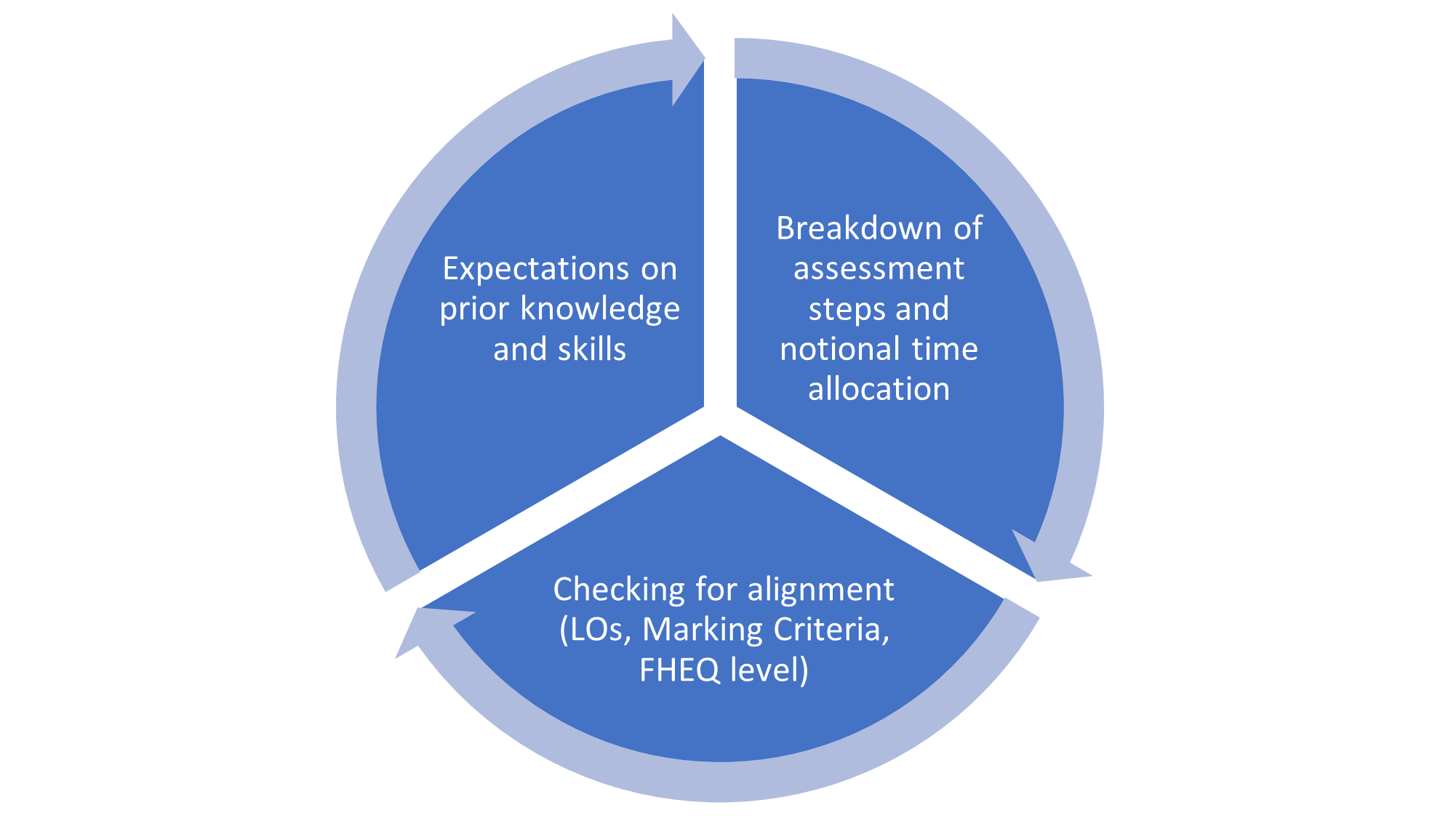Time on Task Tool
This is an easy-to-use three step tool when designing assessment tasks that will take into account not only the output as words or minutes, but the effort and time required for the students to engage with the assessment task.
It can be used within module teams during the planning stage, but also in the classroom with the students when introducing the assessment task.
Taking into account common first year delivery, discussion on “Time-on-Task” for assessments could be a valuable addition to explore cross-disciplinary expectations from students.
Finally, it is a useful tool for holistically considering the assessment load of students throughout each semester at course level. Using this tool at course level it can also facilitate discussions of how assessment tasks are integrated to support students’ knowledge acquisition, and skills development
Purpose of this tool
This tool can be used:
- when designing new assessment tasks
- by facilitating module / course team discussions when considering the demands of the assessment tasks (whether core or applied core).
- by supporting the course/module team with estimating the appropriate number of credits and notional hours required for the completion of the assessment task for students.
- when evaluating the effectiveness of existing assessment tasks.
- when introducing assessment tasks to students.
- by supporting delivery teams with creating relevant resources, guidance, and activities to facilitate the development of students’ assessment literacy.
It is not expected that this tool will be applicable to all types of assessments at all levels.
Designing assessment through a "Time-on-Task" lens
Assessment output tends to be defined by word-counts in a written submission, or minutes in a presentation. However, fewer words can, in fact, make an assessment more challenging, and often the time and effort requirements are overlooked and underestimated. By designing assessment through a “Time-on-Task” lens, we could provide the necessary guidance and support to students that are completing the assessment task.
When considering ‘Time-on-Task’, a starting point would be to consider the assessment credits assigned for the task. Note that although 20 module credits are equated to 200 notional hours of learning, 20 assessment credits do not equate to 200 hours on assessment tasks.
With the assessment credits as a starting point, the following three questions (Fig 1) could be used to support the assessment design process through a “Time on Task” lens in order to help students to develop their assessment literacy and to ‘Pass first time, on time’. The questions are interlinked and the order that are presented, does not necessarily indicate the order that they should be addressed during the assessment design process.
